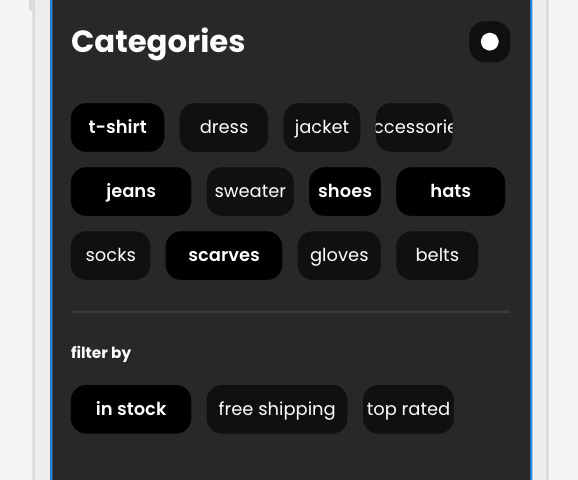Make ing apps demystified: Settings and preferences screen
How we design a settings screen that provides unique ways to configure the application at hand.
The design of a Settings screen is a fundamental aspect of user experience in app design, where functionality and clarity are paramount. This screen, often overlooked in terms of design, plays a crucial role in how users interact with and personalize an app. Let's delve into the design steps and benefits of a well-organized Settings screen.
Design Steps for an Effective Settings Screen
Categorization for Easy Navigation: The key to a user-friendly Settings screen is organized categorization. Users should not feel overwhelmed when trying to locate a specific setting. Grouping related settings together under clear categories, such as 'Notifications,' 'Privacy,' or 'Account,' helps users navigate and make adjustments swiftly and efficiently.
Clear and Understandable Language: Technical jargon can be a barrier. The language used in the Settings screen should be simple, clear, and direct. Avoiding overly technical terms makes the settings more accessible to a broader user base, ensuring that users of all levels of technical proficiency can understand and modify the settings as needed.
Search Functionality: As apps become more complex, including a search function in the Settings screen can significantly enhance usability. This feature allows users to quickly find specific settings without having to navigate through multiple menus, especially useful in applications with extensive settings options.
Toggle Switches for Simplicity: For settings that are simply on/off options, toggle switches provide an easy and intuitive way for users to change their preferences. This binary choice is straightforward and can be executed with a single tap or click, enhancing the overall user interaction with the app.
Photo by Samson Vowles on Unsplash
Benefits of a Well-Designed Settings Screen
Improved User Experience with Organized Layout: A well-organized Settings screen enhances the overall user experience. Users appreciate being able to find and adjust their settings with minimal effort, which can contribute to their overall satisfaction with the app.
Increased Findability of Options: When users can easily find what they are looking for, it reduces frustration and improves the functionality of the app. A Settings screen with a logical structure and the inclusion of a search function ensures that users spend less time searching and more time utilizing the app effectively.
Empowerment through Customization: A well-designed Settings screen empowers users to customize their app experience to suit their preferences. Whether it's managing notifications, adjusting privacy settings, or changing display options, giving users control over these aspects can make the app feel more personal and user-friendly.
Simplified Interaction with Settings: The goal of any app design should be to simplify user interaction, and this extends to the Settings screen. By making the process of changing settings as straightforward as possible, users are more likely to engage with the app and make full use of its features.
Some benefits
A thoughtfully organized layout, where settings are grouped logically, makes navigation intuitive and straightforward. This organization is crucial in preventing the sense of being overwhelmed, especially in complex apps with numerous settings options. The simplicity of finding what one needs without unnecessary hassle is a key factor in user satisfaction.
Incorporating clear and understandable language in the Settings screen is another vital benefit. It ensures that users from various backgrounds and with different levels of technical expertise can easily comprehend and modify the settings. This inclusivity in design not only broadens the app's appeal but also reinforces its user-friendly nature.
The addition of a search function transforms the user experience by leaps and bounds. In today's fast-paced world, the ability to quickly locate a specific setting is not just a convenience but a necessity. It empowers users, saving them time and effort, which in the long run, contributes to a more positive interaction with the app.

Simplification of user interaction, especially through elements like toggle switches for binary choices, further streamlines the user experience. These switches allow users to modify settings with a single action, exemplifying the principle of efficiency in design. Such straightforward interactions not only make the app more accessible but also encourage users to explore and customize their settings more freely.
Overall, the benefits of a well-designed Settings screen boil down to enhancing user empowerment, efficiency, and satisfaction. It's about creating an environment where users feel in control and can tailor the app to their personal preferences with ease.
How do designers solve this? What are the steps?
Creating a settings and preferences screen that effectively manages features across an app is a multifaceted challenge that UX designers approach with a combination of strategic planning, user-centered design, and technical understanding. Here’s a comprehensive overview of how UX designers typically solve for this:
1. Initial Research and Understanding User Needs
User Research: UX designers start by conducting thorough research to understand the users' needs, preferences, and pain points. This can involve user interviews, surveys, and analyzing user data to identify common settings that users frequently access or request.
Analyzing User Journey: Understanding the user journey across the app helps in pinpointing where and how users might need to access various settings.
Keep reading with a 7-day free trial
Subscribe to The Bootstrapped Founder to keep reading this post and get 7 days of free access to the full post archives.






